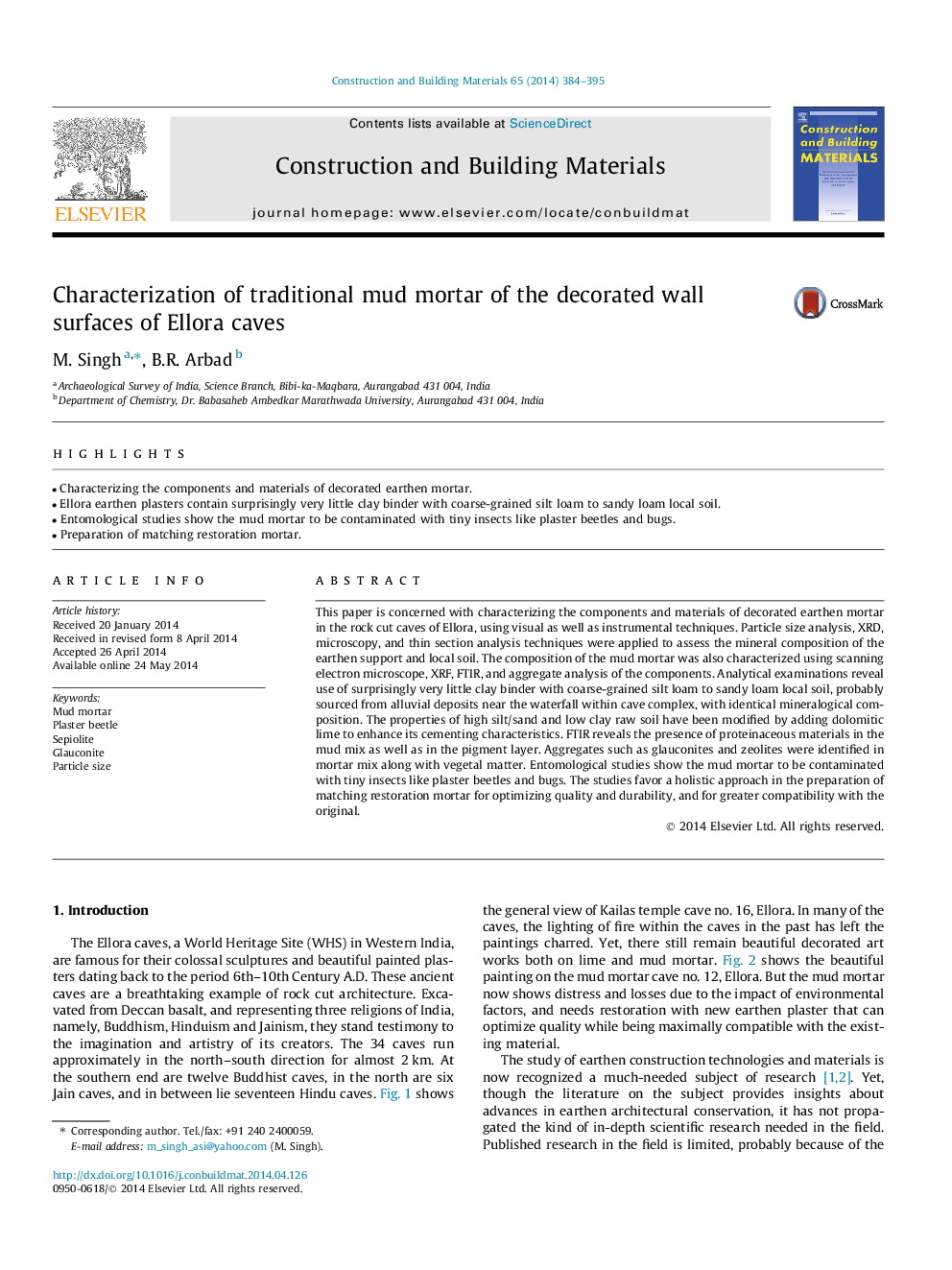| Article ID | Journal | Published Year | Pages | File Type |
|---|---|---|---|---|
| 257508 | Construction and Building Materials | 2014 | 12 Pages |
•Characterizing the components and materials of decorated earthen mortar.•Ellora earthen plasters contain surprisingly very little clay binder with coarse-grained silt loam to sandy loam local soil.•Entomological studies show the mud mortar to be contaminated with tiny insects like plaster beetles and bugs.•Preparation of matching restoration mortar.
This paper is concerned with characterizing the components and materials of decorated earthen mortar in the rock cut caves of Ellora, using visual as well as instrumental techniques. Particle size analysis, XRD, microscopy, and thin section analysis techniques were applied to assess the mineral composition of the earthen support and local soil. The composition of the mud mortar was also characterized using scanning electron microscope, XRF, FTIR, and aggregate analysis of the components. Analytical examinations reveal use of surprisingly very little clay binder with coarse-grained silt loam to sandy loam local soil, probably sourced from alluvial deposits near the waterfall within cave complex, with identical mineralogical composition. The properties of high silt/sand and low clay raw soil have been modified by adding dolomitic lime to enhance its cementing characteristics. FTIR reveals the presence of proteinaceous materials in the mud mix as well as in the pigment layer. Aggregates such as glauconites and zeolites were identified in mortar mix along with vegetal matter. Entomological studies show the mud mortar to be contaminated with tiny insects like plaster beetles and bugs. The studies favor a holistic approach in the preparation of matching restoration mortar for optimizing quality and durability, and for greater compatibility with the original.
